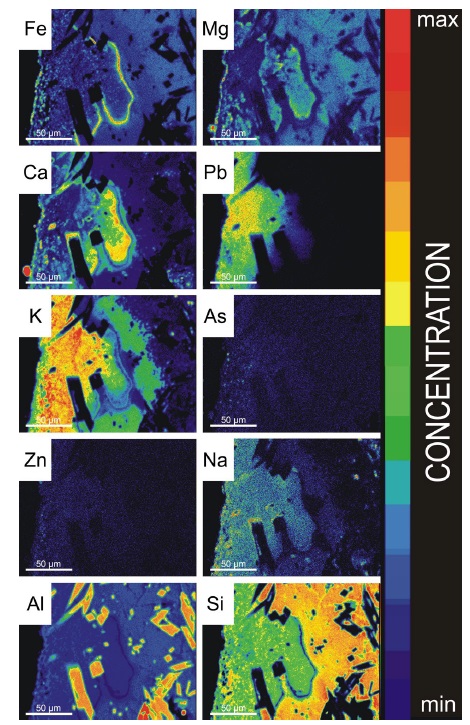Previous studies of metallurgical slags after zinc production indicate their significant differentiation in terms of the content of Potentially Toxic Elements (PTE), mainly Pb, As, Cd and Zn. Vast amounts of these elements are concentrated in waste containing fragments of refractory materials. Identifying the processes leading to enrichment in PTE of this particular type of slag is of significant environmental importance. On the one hand, it identifies the material that poses the most significant risk of emission of these elements. On the other hand, it may allow avoiding similar phenomena in the future.
The conducted research resulted in a complete description of these processes. It includes reactions of the charge components in the form of gas and liquid with refractory materials, manifested by enrichment of some refractory materials in PTE, through density separation, diffusion, corrosion of refractory materials, and finally crystallization of phases with high levels of Pb, As and Zn concentration. The research has been published in the journal Minerals.
Microprobe mapping showing the migration of elements from the furnace charge (left side) to refractory materials (right side).
Chemical and phase reactions on the contact between refractory materials and slags, a case from the 19th century Zn-Pb smelter in Ruda Śląska, Poland / Krzysztof Kupczak, Rafał Warchulski, Mateusz Dulski, Dorota Środek.// Minerals (Basel). – Vol. 10, iss. 11 (2020), art. no. 1006, s. 1-19






